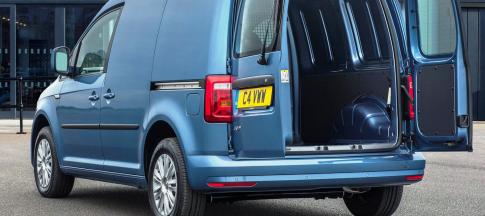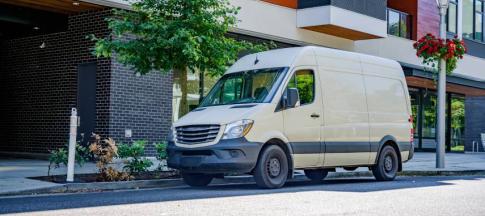
With new electric vans coming onto the market almost every month, you may now be seeing these kinds of vehicles on the road more often.
But many van users don’t believe an electric van will work for them. So, are electric vans any good? Here we’ll discuss the pros and cons of electric vans.
Advantages of electric vans
The advantages of running an electric van are:
- zero tailpipe emissions, making our air cleaner
- the cost of charging is substantially lower than filling up with diesel
- you can enter low or zero-emission zones with no penalty
- they’re easier, quieter, and more pleasant to drive
- they’re often more powerful, coping with a full load with ease
Disadvantages of electric vans
The disadvantages of running an electric van are:
- you need to have access to a charge point at home – this isn’t easy if you don’t have a private driveway
- public charge points can be problematic if you cover a lot of miles a day – they can have long queues, be faulty, and you’ll have to wait 30 minutes to an hour while your van charges
- the weight of the battery packs can impact performance – they can reduce the payload the van can carry compared to the diesel equivalent, and may mean you’ll have a low towing capacity
- payload and weather impact the range your electric van can cover between changes – for example, the 180-mile range quoted by the manufacturer could be reduced to 100 miles in real-world conditions
- you need to pre-condition the temperature of the car’s interior – if not, de-icing or using the air conditioning while you’re connected to the charger can heavily impact the range of the journey
How far can a new electric van travel on a single charge?
The range an electric van can cover between charges is constantly increasing thanks to product development.
This means that a top-up charge during the day is less likely to be needed, and even after road conditions or weather events have taken their toll, you should be able to complete a working day.
These figures are the latest available from the manufacturers at the time of writing and relate to the official Worldwide Harmonised Light Vehicle Test Procedure (WLTP).
Remember they don’t consider the ‘real world’ factors and that these are the highest figures in each model range, sometimes using a large battery that impacts payload.
- Mercedes-Benz Sprinter (2024): 271 miles
- Renault Master E-Tech (2024): 255 miles
- Volkswagen ID Buzz Cargo: 254 miles
- Maxus eDeliver 7: 230 miles
- Vauxhall Combo Electric (2024): 205 miles
- Ford E-Transit: 196 miles
- Nissan Townstar Electric: 186 miles
Electric van payloads
A van’s ‘payload’ is the maximum weight it’s legally allowed to carry, including factors like its weight, the driver and passengers, and a full tank of fuel.
Many electric vans now don’t fall too far short of their diesel sibling when it comes to payload although on larger vans there’s potentially more of a gap.
But thanks to a government dispensation, large electric vans often have a higher payload than the diesel version. How does this work?
With a ‘normal’ driving licence, you’re restricted to a van with a maximum GVM (Gross Vehicle Mass) of 3,500kg but the derogation means that if the van is electric, this limit rises to 4,250kg – which is more than enough to offset the extra weight of the battery pack.
Drivers need to complete training before being able to drive at this increased weight on a normal licence.
There are also rules about electric van towing that are set to be scrapped, such as that the vehicle must be used for carriage of goods and can’t be taken outside the UK.
You can check the GOV page to learn more about these changes.
There are caveats relating to vehicle testing and tachograph requirements, but it’s understood that they may be changing legislation here too.
Running costs
Home charging costs vary depending on the electricity tariff, but it’s been suggested that a full charge on a Vivaro Electric van with a 75kWh battery could typically cost around £20.
If you cover 40,000 miles, that could work out at about £3,900.
The diesel version of the van is estimated to use around £6,900 of diesel covering the same mileage.
You would need to factor in the cost of installing a home wallbox charger, but this should last indefinitely.
How do I know if an electric van is right for me?
Electric vans aren’t for everyone, but a potential buyer can ask themselves a few questions which may make the decision easier:
- Do I have a private driveway? If yes, overnight charging once a wallbox is fitted is simple. If not, this could be an obstacle.
- On the majority of working days, do I cover less than 100 miles? If so, even after ‘real world’ deductions from the official ranges, you’re unlikely to need to find a public charge point. If you’re regularly over this, be prepared for interruptions to your day.
- Is the payload enough? It’s important to check the payload will suit your needs.
- Do I tow a trailer? Check the specs as some can’t tow, or there are strict weight limits. A trailer will also reduce the range of the vehicle further.
- Do I drive in inner cities often? Costly (to diesel users) zero-emission zones will probably increase in number.


